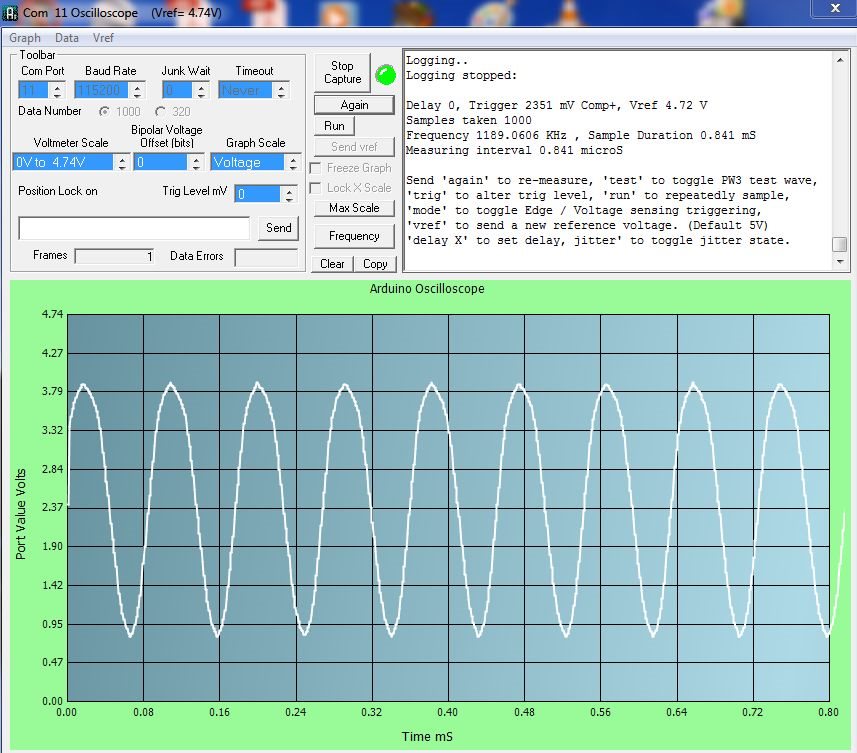Other Parts Discussed in Thread: TLC5510A, ADS7884
I have built an oscilloscope using the excellent TLV571 chip.
The results are good using Normal shutdown, however I cannot get Software shutdown to work.
Normal shutdown register settings:
INT OSC FAST, BINARY
CR1: B01010000
SOFTWARE START (D5), EOC (D4), INTERNAL CLOCK (D3), NORMAL (D2)
CRO: B00110000
I write CR1 before CRO, using the 1st 3 bits of a bi-directional port (C) to control the read (bit 2), write (bit1) and cs (0) lines:
I wait for the end of conversion line to go high on completion
cli();
PORTC = B00000110; // read high, WR high, CS low
__asm__("nop\n\t"); // wait one machine cycle (at 16 MHz)
// yielding a 62.5 ns (nanosecond) delay
PORTC = B00000100; // read high, WR low, CS low
__asm__("nop\n\t");
PORTC = B00000110; // read high, WR high, CS low - transfer data
__asm__("nop\n\t");
while ((PINC & econ) == 0 ); // wait for econ to go high
sei();
This all works and data can be read using the control port (C) to read data from port (PINA):
PORTC = B00000010; // RD low, WR high, CS low
PORTC = B00000110; // RD high, WR high, CS low
// wait for econ to go high
while ((PINC & econ) == 0 );
test = PINA;
This works. (Achieving a data rate of 1189.1 KHz)
However auto reset has a habit of kicking in whilst waiting for the input to trigger, rendering the first 2 data bytes from the TLV571 un-useable.
(The two reading issue is mentioned in the data sheet)
I can partially get round this by continually polling the adc. However this is not ideal.
I have tried changing cr0 to disable auto-shutdown.
B00110100 // cr0 SOFTWARE START (D5), EOC (D4), INTERNAL CLOCK (D3), software powerdown (D2)
The adc then returns a constant value.
I have no idea why.
Any ideas?
David



